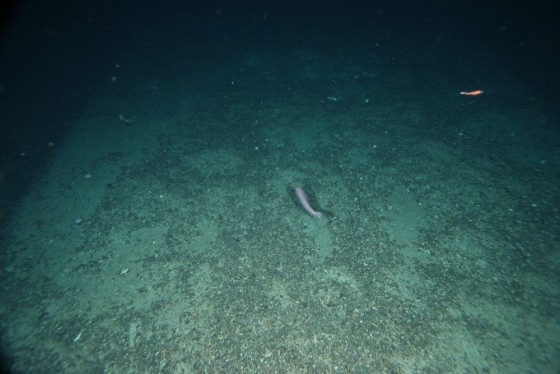Where
Who
CSIRO
When
April 2007, with more surveys planned for 2018
Why
Australia’s largest known cluster of seamounts (extinct underwater volcanoes) is located off the southern tip of Tasmania, and supports unique deep-sea coral communities which are considered among the most biodiverse globally. However, owing to their physical fragility and extremely slow growth rates, these ecosystems are easily damaged by human activities such as bottom trawling. Many of the seamounts now encompassed within the Huon and Tasman Fracture marine parks had been subject to varying degrees of historical trawl-fishing pressure, yet the impact of this is not fully quantified. Increasing our understanding of how trawling affects the composition and diversity of these ecosystems, and for how long these impacts last, will help to develop effective management and conservation strategies, as well as provide a baseline from which to detect future changes.
How
Seamounts with different histories of bottom trawling (still trawled, previously trawled, and never-trawled) within and outside the marine park were assessed using towed video transects. Quantitative stereo-imagery was used to provide estimates of abundance and density of habitats and mobile and attached species.
What did we learn?
Bottom-trawling was shown to have a dramatic and lasting effect on the composition, distribution and abundance of coral communities. The largest differences were observed between trawled (still trawled and previously trawled) and never-trawled areas. Trawled areas showed a complete absence of coral cover compared to 50 percent cover in never-trawled areas, as well as only half the density of species observed in never-trawled areas. The species assemblage of trawled seamounts was also distinctly different to that of never-trawled areas, and there was no evidence of assemblage-level recovery after ten years. These findings indicate that the recovery of seamount ecosystems will take many decades, if not longer, and has strong and practical implications for the management of bottom-trawl fisheries on these unique seamount habitats.
What next?
A planned survey in 2018 will return to the seamounts a third time to conduct repeat surveys on seamounts both within and outside AMPs. This will constitute one of only a few examples of a replicated survey across areas of contrasting conservation status and impact history on seamounts in world oceans. The data, including multibeam acoustics, towed video and benthic sled samples, will be used to gain more complete estimates of undisturbed areas and their ecological characteristics, assess recovery of impacted coral communities, quantify changes to community type that may have occurred, and contribute to developing effective conservation management plans.
Related data and publications
Althaus, F., Williams, A., Schalcher, T.A., Kloser, R.J., Green, M.A., Barker, B.A., Bax, N.J., Brodie, P., Schlacher-Hoenlinger, M.A. (2009) Impacts of bottom trawling on deep-coral ecosystems of seamounts are long-lasting. Marine Ecology Progress Series 397, 279-294.
Williams, A., Schlacher, T.A., Rowden, A.A., Althaus, F., Clark, M.R., Bowden, D.A., Stewart, R., Bax, N.J., Consalvery & M., Kloser, R.J. (2010) Seamount megabenthic assemblages fail to recover from trawling impacts. Marine Ecology 31(s1), 183-199.
For more information please contact marinescience@environment.gov.au.




